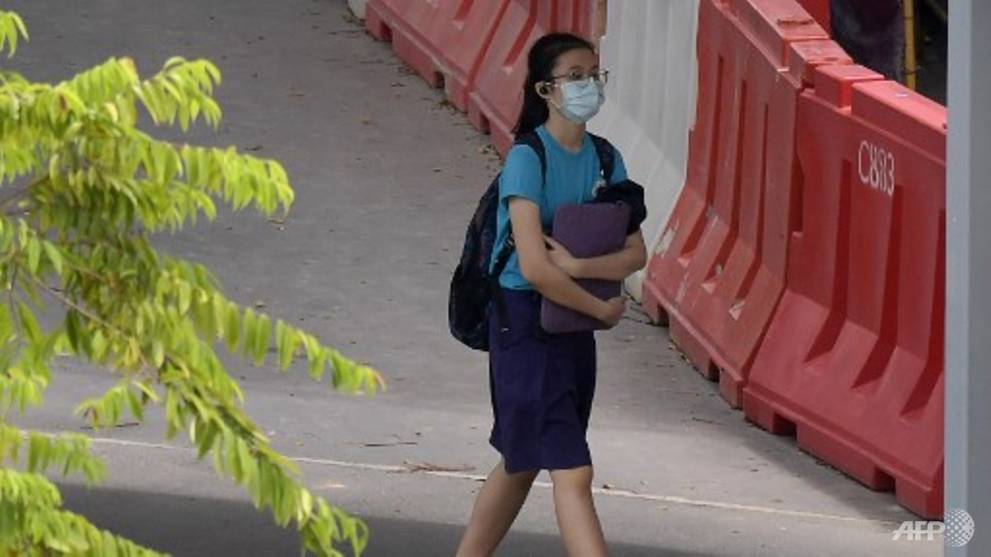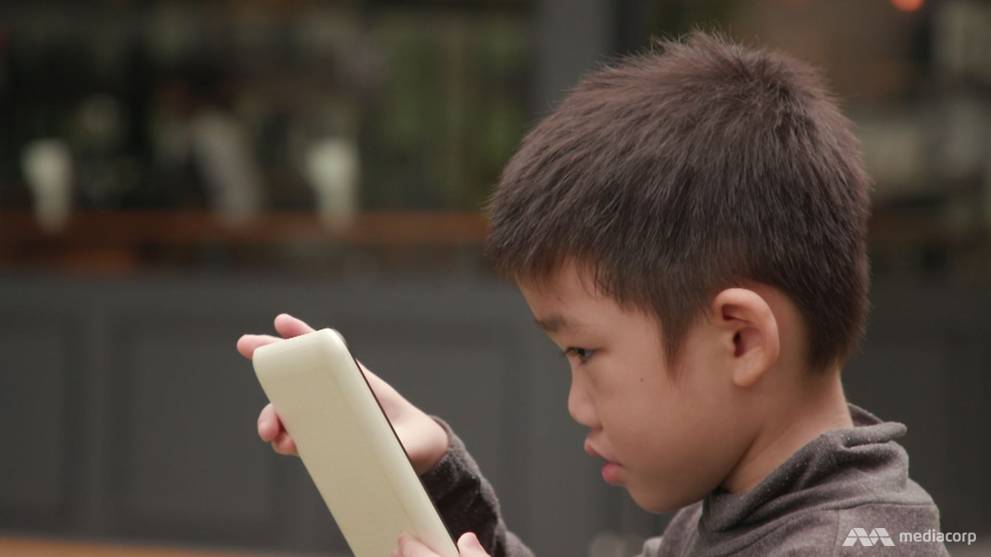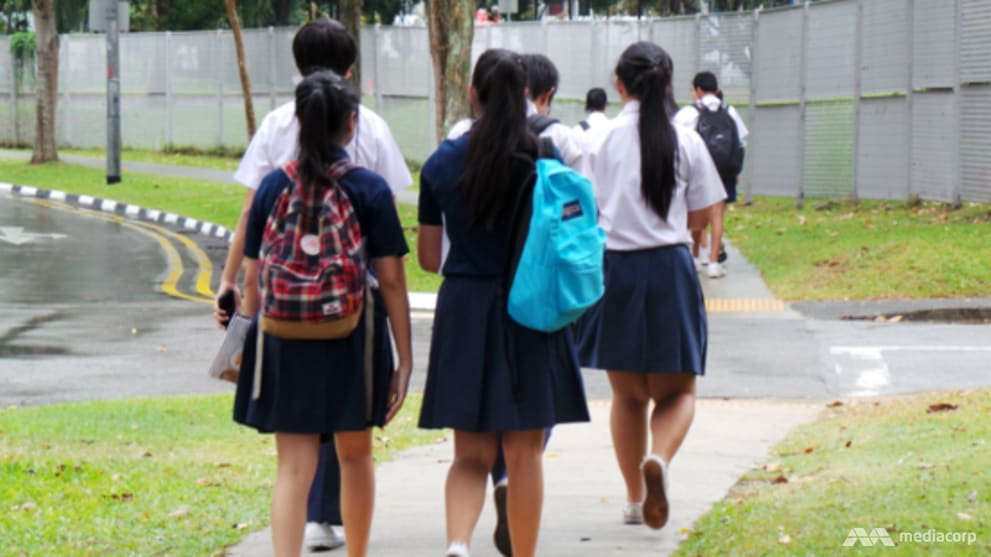
Commentary: Don’t expect your kids to return to school seamlessly
by Annie TanUnderstanding how the circuit breaker affects our children may help us ease them back into school-life, says Annie Tan.
SINGAPORE: The start of a new school term is a popular parenting meme.
Amidst a giddy mix of sweat and sun-drenched holiday memories, children say “goodbye” to freedom, stay-at-home mums say “hello” to peace and quiet, and everyone generally braces themselves for pre-dawn alarms and homework. We all know the drill.
The upcoming new school term, however, feels like nothing before it. Set to begin on Jun 2, it will be displacing the June holidays – a cherished fixture for many generations.
It also follows on the heels of one of the longest school breaks in Singapore’s education history. As part of the COVID-19 circuit breaker measures, schools across the island would have been closed for nearly two months by Jun 2.
READ: Commentary: Parental warning - these May school holidays will be like no other
LISTEN: Home-based learning: Good, bad, terrible ... but mostly good?
If that wasn’t complicated enough for students and their families, the month preceding the school reopening has been the most un-holiday-like school-break ever, with a nation of children stuck at home and literally bouncing off the walls.
Even short jaunts outdoors have been somewhat unsettling, as children emerge into eerily quiet streets, armed with hand sanitisers and a listicle of rules.
Old haunts such as playgrounds, open fields and garden benches suddenly scream danger with a barricade of red barrier tape. Familiar neighbourhood faces are now to be warily avoided. And a sea of masks hides our children’s smiles and muffles their carefree laughter.
Indeed, the May holidays was a disorientating time of inactivity and de-socialisation.

And while we look forward to school reopening, it may be good to note that we cannot expect life to instantly snap back to normal. Some children will understandably find it more difficult to assimilate to school life.
HOW Social Distancing AFFECTS OUR CHILDREN
In fact, as schools gradually gear up to reopen around the world, one of the things that educators have been forced to reconsider is the socialisation of children during this great pandemic.
READ: Commentary: Don't stress over your kids' education this circuit breaker. There are other ways they are learning
Last month, a primary school in Zhejiang, China, came up with the idea of asking their pupils to wear self-designed social distancing hats.
Made with wooden sticks and colourful cardboard, these hats measure out the one-metre safe distance recommended. This multi-hued dystopian image reminds us of how COVID-19 has invaded and reshaped our children’s world.
While this headgear will not be sported in Singapore, on May 19, the Ministry of Education (MOE) announced new measures for the reopening of schools in Singapore.
In primary and secondary schools across the nation, only graduating cohorts in Primary 6 and Secondary 4 and 5 will attend school on weekdays. Other cohorts will rotate weekly between classroom-based and home-based learning.
Students from Assumption Pathway School (APS) and North Light School (NLS), as well as preschools will have their return staggered over a period of approximately a week.
Students and staff will also be required to wear masks or face shields, and be vigilant about hand-washing and social distancing.
On a deeper psychological and social level, the new school term and these new rules may cause general anxiety associated with social relationships and physical contact.

For very young children who are learning the basics of socialising, this experience can be disruptive, alienating and stressful.
As a mother of a toddler, I find myself struggling to explain to my daughter why it is now bad to stand close to people she likes or spend time chatting with them when we cross paths.
This is gradually affecting my daughter’s social experience. When she bumps into her favourite classmate in the park, she seems uncertain about how to spontaneously interact with her friend.
READ: Commentary: COVID-19 is giving dads more opportunities to be involved at home
Shy and introverted children of all ages will find it even more difficult to adjust to school reopening. Separated from their peer groups and having socialisation replaced by screens for an extended period, they may find their social anxiety exacerbated.
With parents spending more time with their children during this period, returning to school breaks the comforting routine and will be stressful for kids who may suffer from separation anxiety, according to Stony Brook University’s child and adolescent psychologists Jennifer Keluskar and Debra Reicher and psychiatrist Judith Crowell.
Parents of younger children may expect some crying, screaming or feet-dragging – in many ways, a replay of the first day of school in the middle of the year.
Helping Our Children With Anxiety
Social and separation anxiety are not the only feelings our young ones struggle with.

Having lost vital contact with important attachment figures such as grandparents, relatives and friends for a period of time, they may also feel a heightened sense of fear, instability and loneliness.
While adults may be able to rationalise this as a temporary change, albeit without a clear end in sight, children may find it harder to understand or process.
For some, it can feel like the world as they knew it and their entire social support system has been threatened or razed to ground overnight.
Glimpses of news coverage, snippets of adult conversation and the shift in their parents’ mood and behaviour may also affect them on a subconscious level.
READ: Commentary: Reading can be a useful escape from the circuit breaker in more ways than one
These stressors will be magnified for families facing job insecurity, financial difficulties or increased domestic conflict and abuse.
In fact, studies by humanitarian organisation Save the Children suggest that close to one in four children living under lockdowns, social restrictions and school closures are dealing with feelings of anxiety.
Another study conducted in Hubei province, China, where the virus was first reported, found that close to one in five students reported depressive or anxiety symptoms.
Some of this stress and anxiety may manifest or become more apparent when children return to school. Psychologists suggest that some may be more sensitive or clingy, throw tantrums or cry for no clear reason, appear more withdrawn, or suffer from poor concentration.
After the two-month break in routine, sleep-ins and extended screen-time, they may also take a longer time to adjust to the pace and structure of school.
READ: Commentary: It is time to rethink how we do online education
Having said that, parents may celebrate the reopening of school as the return to normalcy but instead of rushing to catch up on lost time, perhaps it will help if they instead focused on the emotional needs of their children during this period of transition.
In fact, experts from the National Association of School Psychologists (NASP) in the United States recommend talking to children about their fears, empowering them by answering their questions honestly, and showing them lots of love and affection to help them cope with anxiety throughout the pandemic.
It also helps to give children time to ease back into the routine of school, and break unwanted habits acquired during the circuit breaker such as extended screen time.
Accept that some regression such as separation anxiety, social anxiety or discipline issues is understandable. After all, like us, our children have been thrown into the deep end of one of the most surreal and scary global disruptions of our time.
Over the past few months, many of them have subconsciously carried more worries and anxiety than they may have words for. Armoured with their little masks, they continue to confront a new school term in a socially-distanced world with rules they may not fully understand.
They are little heroes in their own right.
If we validate their feelings, commend their courage, trust in their resilience and support them through this confusing period of transition, our children, and our bond with them, may yet be strengthened by this trial.
LISTEN: Why lifting lockdowns and easing restrictions may be the biggest COVID-19 test facing countries
BOOKMARK THIS: Our comprehensive coverage of the coronavirus outbreak and its developments
Download our app or subscribe to our Telegram channel for the latest updates on the coronavirus outbreak: https://cna.asia/telegram
Annie Tan is a freelance writer.